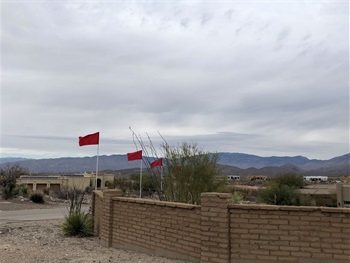Ready - Get Ready
Start preparing for wildfire season now, before the threat is imminent. Let's make Los Alamos a wildfire-Ready community by implementing today, "Ready" measures from the Ready, Set, Go!(PDF, 2MB) program.
Ensure you're informed during emergencies by signing up for the county’s emergency alert system, CodeRED. This service delivers critical fire and emergency alerts directly to you. Preparing your home is just as crucial. Implementing Home Hardening strategies can significantly enhance your home's resilience against wildfires. This involves using ignition-resistant materials on your home's exterior to protect against flying embers and radiant heat. Additionally, maintaining Defensible Space around your property is essential. This buffer zone is created by clearing away dead plants, grass, and weeds, reducing the risk of wildfires reaching your home.
Combining Home Hardening with Defensible Space provides your home with the best chance of surviving a wildfire. Click on the buttons below to learn more about protecting your family, home, and community from the threat of wildfires.
Defensible Space and Fire-Resistant Landscaping Can Protect Your Home
If you live next to a densely vegetated area, you can slow or stop the spread of wildfires that threaten your residence by creating defensible space around your home. Removing weeds, dried grass, brush, and other vegetation reduces the risk of ignition from flying embers. It also provides a safe area for firefighters to operate if they have the capacity to defend your home.
Consider This
Unmanaged and overgrown vegetation between and around homes increases the risk of wildland fire spreading throughout the community and endangering lives and property. Pre-fire planning through mitigation and vegetation management allows firefighters the ability to fight wildland fires more safely. The work you complete today may save your home and protect a firefighter tomorrow.
Ember Zone
An ember is a small, glowing fragment from a wildland fire that is carried by the wind. Embers are light enough to travel long distances and are the primary reason homes ignite, often at significant distances from the actual flame front of a wildland fire. Embers travel inside your home through vents, windows, and other openings.
Homes on the Wildland Boundary are at Risk
If your home is within one mile of a natural area, it may be considered part of an ember zone. Keep in mind, embers can destroy homes or neighborhoods far from the actual front of the fire. Use the information in this Guide to help you prepare your property.
Red Flag Warning
A Red Flag Warning is issued by the National Weather Service when low humidity, warm temperatures, dry fuels, and strong winds could combine to produce extreme fire behavior. Fires occurring during a Red Flag day can be very dangerous and spread rapidly. You should always follow the instructions provided by your local emergency response organizations and be prepared to take immediate action.